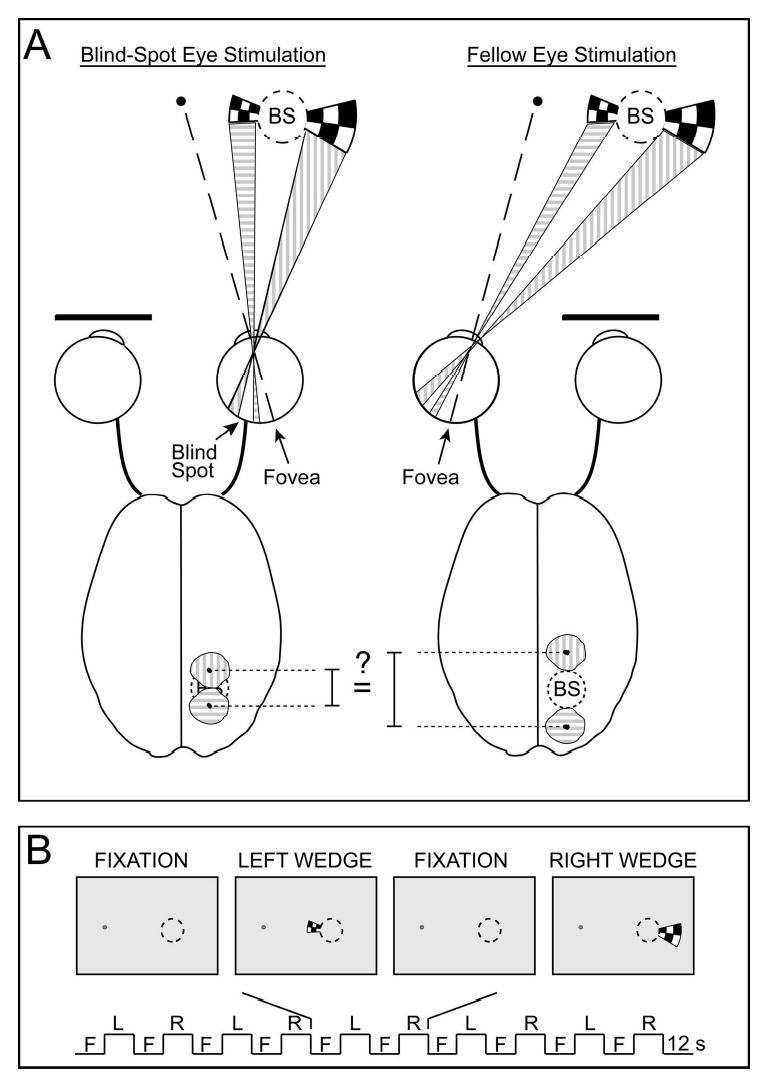Figure 1.

Experimental design and theoretical predictions of this study, shown in a schematic illustration. A: The passive remapping hypothesis predicts that independent stimuli presented to the left and right of the blind spot’s spatial location should lead to neighboring activations in visual cortex when the blind-spot eye is stimulated, but more separated activations when the fellow eye is stimulated. We tested this hypothesis by presenting wedges of flickering checkerboards independently to each eye, either to the left or to right of the blind spot’s spatial location. The wedges abutted the spatial location of the blind spot, and wedge sizes were adjusted to account for cortical magnification. B: During a single experimental run, wedges were alternately shown to the left (L) and to the right (R) of the blind-spot location for 12-s stimulus periods, interleaved between fixation rest periods (F).
